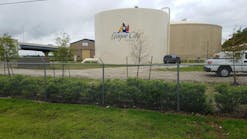How utilities can learn more about their system with technology
Water stress is increasing all over the world. Climate change, urban population growth, tightened regulations, aging infrastructure, and water scarcity are some of the many global challenges water utilities must address in increasingly creative and cost-effective ways.
What if water utility staff and executives had access to a complete, up-to-date, holistic view of a water system and actionable, informative dashboards and insights 24/7? What if the operational staff is alerted when an anomaly occurs within the utility and can take action to prevent failures before they occur, drastically reducing costs of asset maintenance? What if utilities could tightly monitor and manage water quality or ideal pressure throughout the entire system with fewer sensors than traditionally thought? A powerful software tool that provides accurate estimations and awareness of a community’s supply would help societies better manage our precious resource and help resolve the global water crisis. This is the promise of digital twins.
What is a Digital Twin?
In simple terms, a digital twin is a digital representation (usually in the form of a model such as hydraulic models, chemical-based models, numerical models, etc.) of both the physical assets of a system as well as the behavior of the system. The model uses near real-time data from the physical “twin” (SCADA, IoT sensors, meter data, etc.) as input parameters for running the simulations. Other data sets collected from the physical twin are used to continuously calibrate the digital twin.
There is a great deal of untapped value when data from the different specialized systems are used in concert with more holistic management. Digital twin technology brings all operations and business management together in one system through data and application integration. The increased computational power of cloud computing makes it easier to run the models in continuous mode, and with constant “pairing” of near-real-time operational data from the physical system, the models can be calibrated or validated to behave like the physical system or twin.
The digital twin of a water utility system is an ever-evolving set of software as new data becomes available or the use of machine learning augments the models for a more accurate representation of the physical system. It is, therefore, critical for all utilities as they continue to adopt digital technologies and applications (GIS, CMMS, ERP, CIS, etc.) to consider the integration of the data sets and applications in the formulation of a digital twin. WW




